Haze Cannabis Strain: Origins, Effects, and Growing Tips

Haze first lit up the scene back in the '70s – and it's been turning heads ever since. The story of its origin? Well, there’s more than one version, and none of them are exactly airtight. Think of it as marijuana folklore: a little hazy, a little wild, and totally iconic. What’s not up for debate, though, is its impact. Since that legendary debut, Haze has spawned hundreds of offspring and racked up awards like it's on autopilot. Decades later, it's still collecting cups and blowing minds.
What Makes Haze Weed Special?
Haze is that tall, wild Sativa-dominant hybrid born from a global mashup of Thai, Colombian, and Mexican landrace genetics. However, despite its legendary status today, fame didn’t come overnight. Originally a tropical beast, Haze needed hot, sunny vibes to thrive – not exactly ideal for growers outside the equator zone. Breeders had to hustle hard to make it work in cooler climates.
True to its Sativa roots, the original Haze was in no rush. We’re talking 16-20 weeks from seed to harvest, with towering plants that could hit 2, 3, or even up to 4 meters (6-13 feet) in height. By December, you’d end up with a sticky jungle of resin-packed buds that made every week of waiting totally worth it. These days, however, there are also Haze strains specially adapted for indoor grows, so even growers up north can run this legendary strain in a tent or grow box and get the full-on Sativa experience.
Effects and Typical High of Haze Strains
Most cannabis strains born from Haze genetics come with high THC levels (17-23% or even more in some cases) and barely-there CBD. That combo makes for a potent, sometimes borderline psychedelic ride – so beginners, proceed with caution. However, in moderate doses, Haze is all about energy and uplift, making it a great choice for daytime use and staying active. Over time, this family of genetics has become the gold standard for Sativa lovers, delivering a powerful mental buzz that fires up creativity and puts a spring in your step.
Terpene Profile: Flavor and Aroma Breakdown
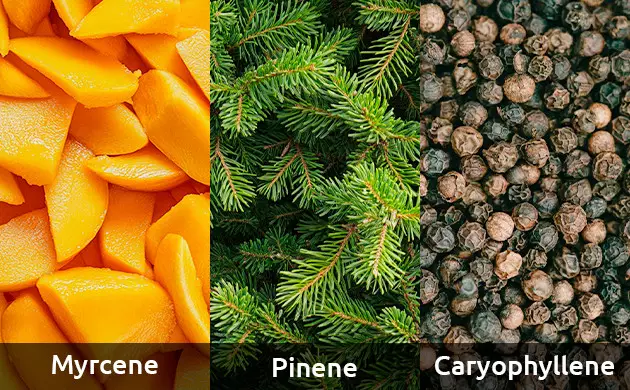
When it comes to flavor and aroma, Haze strains bring a whole lot to the table. Most tokers report earthy, citrusy, musky, and floral notes – the classic Haze combo. However, depending on how it’s grown, you might also catch hints of fruit or pine, or even a touch of chocolate.
Nonetheless, the final taste and scent can shift quite a bit based on growing conditions – light, nutrients, watering schedule, and all that jazz. Some growers who harvest their buds in stages notice that colas picked at different times have noticeably different flavors and effects. With Haze, the journey’s always full of tasty little twists.
Ideal Climate and Conditions for Haze Cannabis Strain
Haze performs best in a warm, sunny climate similar to the Mediterranean. Ideal temperatures range between 22-30°C (72-86°F). As a photoperiod Sativa with a notably long flowering time – usually 12 to 14 weeks – it’s not always suited for short outdoor seasons. If that’s the case in your region, it’s best to cultivate Haze in a greenhouse or controlled indoor environment where light cycles and temperature can be managed precisely.
Humidity should be kept moderate, especially during flowering, to prevent mold. These plants also need plenty of space and airflow, as they can grow over 2 meters (around 6 feet) tall. Haze stretches wide and tall, so plan your grow space accordingly to let your plants thrive and reach their full potential.
Growing Haze Genetics
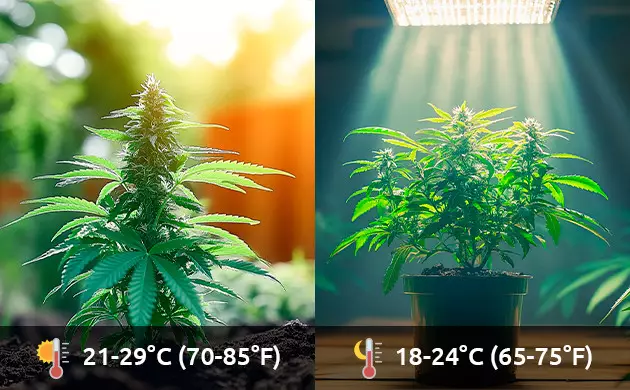
Haze strains may be more grower-friendly than they used to be, but their Sativa genetics are still wild at heart. These plants love to stretch, take their time, and grow big – which means indoor growers need to stay one step ahead. Here’s what matters most if you want to keep your Haze happy in a grow box:
- Top early: Don’t wait. As soon as your seedling is stable, top it. Haze plants keep growing even after they flip to flower, so early topping helps prevent them from kissing the ceiling later.
- Train low: Use LST, ScrOG, or your favorite technique – the goal is to redirect that vertical energy into horizontal growth. You don’t have to be fancy, just consistent.
- Flip to flower early: Once your plant hits about half your max space, switch to bloom. Otherwise, expect a jungle by harvest.
- Keep the light close and cool: Use bright lights with a cool blue spectrum during veg and keep them low – but not too low. Adjust daily to avoid burn and stretch.
- Feed sparingly: Haze isn’t a fast grower, so ease into nutrients. Start at ¼ to ½ strength only when needed, then dial it up slowly.
- Don’t forget ventilation: These plants get loud. Loaded with resin and terps, Haze flowers smell intense. A proper exhaust system and carbon filter will save you headaches (and awkward convos with the neighbors).
- Support those colas: By late flower, heavy buds may need stakes or ties. Haze loves to bulk up – but her branches might not be ready for it.
Give her space, structure, and patience, and your Haze will reward you with tall yields, killer flavor, and that unmistakable high.
The Haze Legacy
The Haze saga begins in early 1970s Santa Cruz, California, where the legendary Haze Brothers started experimenting with landrace Sativas collected from across the globe – a rarity at the time when most growers used only local seeds. Their first successful cross combined Mexican and Colombian Sativas. Nearly a year later, the best female phenos were bred with a male Thai landrace, resulting in what would become the original Haze. The high was intense, cerebral, and borderline psychedelic – a true game-changer. Four phenotypes emerged from their work: Gold, Silver, Purple, and Blue Haze, with seeds spreading fast among cultivators.
Around 20 years later, as the U.S. cracked down on cannabis, a close friend of the brothers, Sam the Skunkman, took Haze genetics to the Netherlands. Dutch growers weren’t initially impressed – Haze struggled to finish in the country’s short, rainy seasons. However, things changed when Neville Schoenmaker, founder of one of Holland’s oldest seed shops, got his hands on the seeds. He stabilized the line and introduced Neville’s Haze, which quickly became a cult hit despite its premium price. Neville later bred iconic strains like NL#5 x Haze and Silver Haze, eventually winning the High Times Cannabis Cup in 1989.
Since then, Haze genetics have dominated competitions and seed catalogs around the world. Super Silver Haze took home the Cannabis Cup three years in a row (1997-1999), Amnesia Haze followed up with wins in 2004 and 2012, and strains like Super Lemon Haze, G13 Haze, and Arjan’s Haze No.1 added to the trophy shelf.
From underground Cali grows to global cannabis royalty, Haze isn’t just history – it’s a legacy that keeps on blazing.
Top Haze Strains
Ready to turn your brain up to eleven? These Haze-heavy hitters aren’t here to chill – they’re here to launch you into orbit, fuel your flow, and keep the vibe high from sunrise to sunset. Pick your potion, spark it up, and let the head trip begin.
Ghost Train Haze (Seedkeepers)
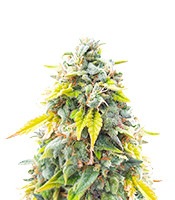
- Photoperiod
- A high-speed ticket to euphoria
- 500 - 600 g/m² indoors
600 - 800 g/plant outdoors
Hop on and hold tight – Ghost Train Haze isn’t here for mellow moods. Packing a wild 28-30% THC, this Sativa-leaning hybrid lifts you into a heady buzz that fuels creativity and clears the mental fog. The genetics? Ghost OG meets Neville’s Wreck, resulting in a spicy, woody smoke with citrusy sparks. In just 8-9 weeks, you’ll harvest dense, resin-soaked buds that scream extract potential. This strain is ideal for artists, deep thinkers, and anyone who likes their highs intense and inspiring.
Liberty Haze (Barney's Farm)
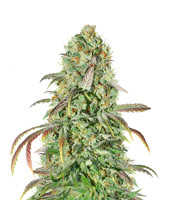

- Photoperiod
- Unwinding freedom
- 600 g/m² indoors
Liberty Haze isn’t messing around. With 25% THC and iconic G13 x ChemDawg 91 genetics, this 60% Sativa hybrid brings on a clean, fast-acting high that’s as mentally stimulating as it is mellowing. She stays compact but cranks out dense, colorful buds, while being all skunky citrus and pine in the aroma department. Great for daytime sessions, social energy, or tuning into your creative zone, Liberty Haze is a feel-good favorite with serious character.
Amnesia Haze (Victory Seeds)
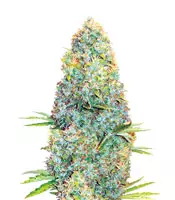

- Photoperiod
- Soul rising
- 600 - 800 g/m² indoors
1000 - 1500 g/plant outdoors
There’s a reason Amnesia Haze is a staple – she’s got that morning magic down. With 25% THC, this Sativa-dominant legend delivers an energizing cerebral lift that kicks stress and sluggishness to the curb. Expect bold notes of lemon and pepper, rounded out with a smooth earthy-coffee finish. She may take up to 13 weeks to flower, but the rewards are well worth it – aromatic, oversized buds and a high that stays with you all day. This one’s a true cult classic with global roots and timeless effects.
Critical Neville Haze Auto (Delicious Seeds)

- Autoflowering
- Energy booster for a lazy
- 600 g/m² indoors
400 g/plant outdoors
This strain is for the Sativa purists out there who want it easy. Critical Neville Haze Auto brings 21% THC and almost pure Sativa energy in a compact, fast-finishing autoflower. You’re looking at 80-85 days from seed to harvest, with a high that’s all uplift, focus, and good vibes. The flavor leans sweet and fruity with a pungent kick, while her manageable size makes her perfect for low-key grows. If you’re after inspiration without the hassle, Critical Neville Haze Auto is your girl.
Auto Skywalker Haze (Dutch Passion)
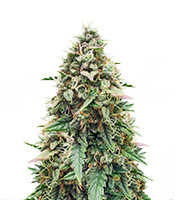

- Autoflowering
- Refreshing and strong
- Very High
Blast off with Auto Skywalker Haze, a tall and mighty Sativa autoflower that hits with 20% THC and a euphoric, sociable high. Think blueberry smoothie laced with citrus and earth – tasty, smooth, and surprisingly punchy. She loves the light, thrives indoors or out, and can stretch up to 2 meters under the sun. If you’ve got space and want a strain that keeps the energy high and the stress low, this one’s got intergalactic appeal.
Super Silver Haze (GHS)
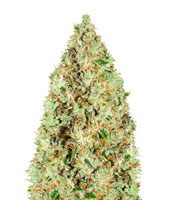

- Photoperiod
- Legen - wait for it - dary
- 800 g/m² indoors
1500 g/plant outdoors
Old-school fans, this one’s for you. Super Silver Haze made her mark in the late '90s – and for good reason. At 19% THC, she delivers a bright, motivating high followed by a smooth Indica wind-down. Her Skunk #1 and Northern Lights heritage keeps things balanced, while the flavor leans citrusy and sweet with a whisper of pine. Outdoors, she can yield up to 1.5 kg, so don’t underestimate her. Classic, flavorful, and uplifting – this one’s still got it.
Original Auto Amnesia Haze (Fast Buds)

- Autoflowering
- 400 - 650 g/m² indoors
70 - 300 g/plant outdoors - Inner roller coaster
Original Auto Amnesia Haze is that sweet spot between high energy and mellow fade. With 22% THC, this citrus-forward autoflower brings a buzzy, clear-headed high that gradually melts into calm focus. Perfect for creators and thinkers, she’s also a tall grower, reaching up to 150 cm and yielding generously. If you’re down for a little training, she’ll reward you with fragrant buds and that unmistakable Amnesia kick – Amsterdam vibes, no passport needed.
FAQ
Even legends come with their own quirks. Below are quick and clear answers to the most common questions about growing and enjoying Haze varieties.
Are Haze strains more potent than Indica or Hybrid varieties?
Not always. Haze strains typically have high THC content and strong psychoactive effects, but their potency depends on the specific phenotype and can sometimes fall short compared to certain Indicas or Hybrids.
How long does it take to grow a Haze plant?
From seed to harvest, it can take anywhere from 14 to 20 weeks. The flowering stage usually lasts about 12-14 weeks.
What are the key cannabinoids found in Haze strains?
The main cannabinoid is THC (often over 20%). CBN and moderate levels of CBD may also be present, but in much smaller amounts.
Are Haze strains considered pure Sativas?
Many Haze varieties are predominantly Sativa (up to 90%), but they’re rarely 100% pure.
Wrap-up
From their legendary roots in California to world-stage domination, Haze strains have earned their place as true Sativa icons – powerful, aromatic, and full of character. We’ve broken down their history, growing habits, signature effects, and the best strains to try if you're chasing that euphoric, clear-headed high.
We hope we’ve managed to inspire you – and if you haven’t grown a Haze yet, now’s the perfect time to dive in and see what all the hype is about. Got a favorite Haze strain, tip, or story? Drop it in the comments and keep the conversation rolling!
Herbies Head Shop expressly refuses to support the use, production, or supply of illegal substances. For more details read our Legal Disclaimer.












Thank you for leaving a comment for us!
Your feedback will be posted shortly after our moderator checks it.
Please note that we don’t publish reviews that: